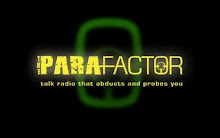 The EMF meter or “detector” has become a staple in the ghost hunter’s arsenal. Fluctuations in the electromagnetic field can be both artificial and natural, and can be attributed to such common items as simple household appliances and power sources. Now the average ghost hunter will measure the field around them and, if no artificial source or other source is apparent, assume that a spike on their meter indicates the presence of a spirit. I believe the bulk of the ghost hunting or paranormal investigation community is comprised of intelligent, thoughtful individuals, but I also believe that the origin of the EMF meters role in investigation has been slightly skewed, however.
The EMF meter or “detector” has become a staple in the ghost hunter’s arsenal. Fluctuations in the electromagnetic field can be both artificial and natural, and can be attributed to such common items as simple household appliances and power sources. Now the average ghost hunter will measure the field around them and, if no artificial source or other source is apparent, assume that a spike on their meter indicates the presence of a spirit. I believe the bulk of the ghost hunting or paranormal investigation community is comprised of intelligent, thoughtful individuals, but I also believe that the origin of the EMF meters role in investigation has been slightly skewed, however.  Let’s take a look at the research of Dr. Michael Persinger. On the surface, Persinger’s findings help to validate the use of EMF meters to detect paranormal activity. Notice however, that I used the phrase “paranormal activity” and not “ghost research.” Persinger’s conclusions state that fluctuations in the electromagnetic field affect the human brain in such a way that it produces sensations that duplicate what is commonly attributed to hauntings or spirit activity. If we are using the work of Persinger and others to reinforce the importance of EMF equipment in the field, then we need to look at the implications as well.
Let’s take a look at the research of Dr. Michael Persinger. On the surface, Persinger’s findings help to validate the use of EMF meters to detect paranormal activity. Notice however, that I used the phrase “paranormal activity” and not “ghost research.” Persinger’s conclusions state that fluctuations in the electromagnetic field affect the human brain in such a way that it produces sensations that duplicate what is commonly attributed to hauntings or spirit activity. If we are using the work of Persinger and others to reinforce the importance of EMF equipment in the field, then we need to look at the implications as well.The subatomic universe is constantly changing not only the way that science looks at matter, but also the way that science looks at faith. The ability for perception to actually influence matter, as well as belief, is not a new concept, but the methods that are being observed in the lab are. We can only speculate that the world around us then, is more pliable than we once thought. What about the unseen world around us? I might have to disagree with Persinger on this: his thoughts on EMF are to produce the “appearance” of paranormal, but what if they allow it to happen? What if an EMF spike doesn’t indicate the presence of a spirit, but actually indicates an area where a spirit CAN appear? If this is the case then where does the quantum belief system come in?
Just turn on your tv to any of the myriad of paranormal programs dotting the cable tv landscape and you’ll see any number of ghost hunters talk about “energy”. They’ll even say that spirits “use” energy to manifest. This might be partially true. Spirits, entities or even creatures of a cryptozoological category might indeed need us, but it might not be our “energy”. It might be our faith. If belief influences our reality in ways that we are only beginning to understand, how might it affect what some have deemed the multiverse? Is the increasing use of equipment like the EMF meters actually strengthening our belief that the instrument detects activity and in turn actually augments the phenomena by increasing its very potency? It certainly hasn’t been the first time.
Just recently a National Geographic team used infrasound and suggestion to produce similar results in a control group to simulate the effects reported in a “haunted” abandoned prison. What Nat Geo failed to investigate was the effect of environment, suggestion and infrasound on faith and its impact on matter on the quantum level. We might always be left with a “which came first, the chicken or the egg” scenario, but we are dealing with science and science that is constantly learning about the effect of belief on the physical world. Let’s examine the chicken and the egg on how it pertains to our world and we might better understand how both belief and the pre-existence of the phenomena are both necessary in this hypothesis.
Does our belief in the world then create the world? I think that would not only be a naive assumption but one that would have to rewrite the very definition of reality and matter: a discussion that might rely more on philosophy and theosophy than the paranormal and a somewhat revised scientific method. I think we need to rephrase our initial attempts to explain the quantum belief system and more accurately say that the perception and preformed opinion of the observer augments, intensifies, and even changes the experiment. This allows the existence of the phenomena independent of the human observer (sorry, Shrodinger), but also clearly defines the observer’s role in the activity.
Do EMF detectors work then? The answer might actually lie in the rephrasing of the question: Do you believe they work?
Ash

No comments:
Post a Comment